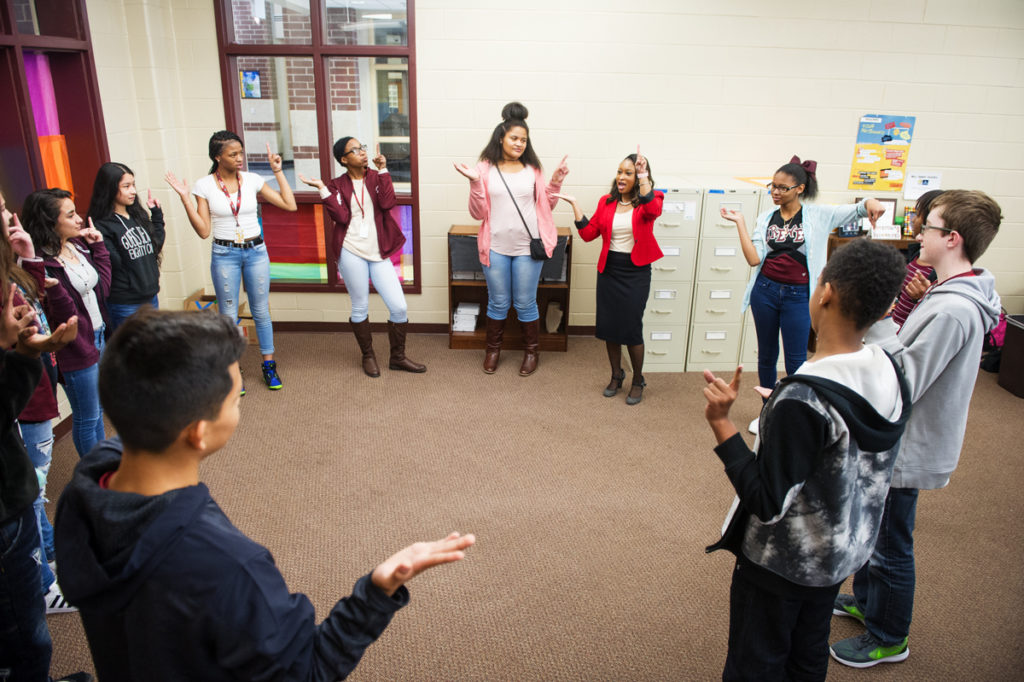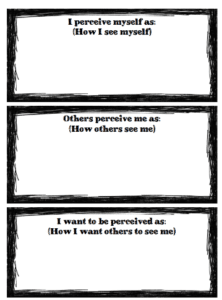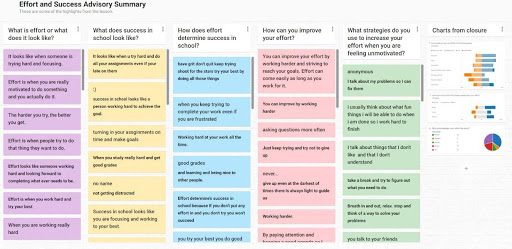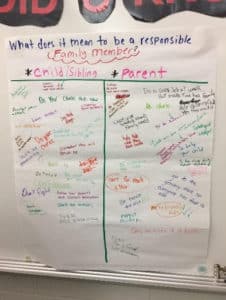
Early in the morning, as I am getting ready to go teach, I take a moment to look in the mirror and ensure I’m ready for the day. I make sure that my outfit matches and that there isn’t any food stuck in my teeth. And I take a moment to self-reflect: Am I doing enough? Do I really know my students? Do my students really know me? I imagine my students taking time in their own busy mornings for a similar self-reflection. I know I will be giving them the opportunity to practice these skills later in the day through Responsive Advisory Meeting.
Responsive Advisory Meeting is the best way for students and teachers alike to improve their self-knowledge through self-reflection. Here are five steps you can take to use Responsive Advisory Meetings for this purpose:
(New to Responsive Advisory Meeting? Learn more here.)
As a teacher with 20 years’ experience, I know that for quality learning to occur, I need to be able to self-reflect on my teaching practices. This journey of self-reflection began for me in 2014, when I was introduced to the Responsive Classroom approach. I learned how important it was for students to have a voice in the classroom – a place where they felt safe, significant, and that they belonged. I realized that it was okay if my classroom was a little louder and that students would be working more independently. It was okay to give up some of my control to make room for students to have fun. If I did not create this environment for my students, there was little chance that they would learn.
I knew I would never be able to incorporate every aspect of the Responsive Classroom approach immediately. Instead, I took small steps. I started with brain breaks, then interactive learning structures, followed by incorporating teacher language through sentence stems, and finally, the game-changer, Responsive Advisory Meetings. After running a few RAMs, I knew that I was becoming a teacher that I always wanted to be: a teacher who takes steps to teach the whole child, including skills like cooperation, assertiveness, responsibility, empathy, and self-control.
Many years ago, after venting my frustrations about my students to some coworkers in the teachers’ lounge, my supervisor gave me some important advice. He told me that when a student is not doing what we need them to, then we need to do more. At the time, his advice made me angry; I felt that I was already doing so much. Now I understand what he was trying to tell me: there are reasons why students do not do their work. It’s up to educators to figure out those reasons and address them.
If we want our students to self-reflect, we need to be able to model self-reflection for them. In addition, if we want our students to get better at self-reflection, then we need to give them chances to practice. Whether your students are struggling with putting effort into their work, turning in their assignments, or following directions, the goal is to help students with their academic readiness and their social-emotional learning. Here are some possible advisories that can help students reflect on and address specific concerns you may be having:
| Teacher Concern | Possible Advisory |
|---|---|
| Lack of effort into classwork | Effort/success |
| Lack of participation | Communication |
| Following directions | Listening skills |
| Negative self-talk | Self-perception |
| Stressed | Stress reduction |
| Argumentative students | Agree and disagree respectfully |
| Poor assessment scores | Studying strategies |

My main takeaway from years of advisory meetings is that students just want someone to listen to them. By providing the environment where kids can talk, we as teachers can reflect on our practices and students can reflect on theirs. For instance, I recently ran an advisory where I asked my students: where do you put most of your effort, and why? A response that stood out to me was “I put my effort into my phone because no one acknowledges my effort.” In order to acknowledge effort, we must be able to notice it. Whether kids put effort into their families, video games, pets, sports, or friends, it is important for us to know where to look for it because it provides us with avenues to reach our students.
Sometimes, advisory lessons require a different type of listening. For the last couple of years, I have done an advisory on self-perception. This advisory allows my students to express how they perceive themselves, how they think others perceive them, and how they want to be perceived. For students to have their feelings expressed anonymously, we use the snowball strategy, which is where students write their responses on a sheet of paper, crumple it up, and then toss it at a bullseye on the screen. Each student picks up a sheet of paper and, in after forming a circle, reads aloud what is written on the paper they picked up.
When running an advisory meeting, it is important to be honest with your students about the purpose of the advisory. For example, I recently ran an advisory meeting on stress reduction. As part of the advisory meeting, I opened up to my students about the impact that chronic stress has had on me personally and explained that my purpose for running the advisory was to help them come up with strategies to stop chronic stress before it starts to cause physical harm. Teachers are not required to let their students know everything about them, but students can benefit from hearing that adults deal with the same struggles that they do.
I asked my students how often they feel stress and it was evident that it was often:
| How many days a week do you feel you suffer from stress? | |
| Zero | 4 |
| 1-2 days a week | 33 |
| 3-4 days a week | 23 |
| 5-6 days a week | 14 |
| 7 days | 8 |
More importantly, I asked my students how well they think others notice their stress levels. Here is what they said:
I genuinely believe that advisory saves lives. When students open up, it allows adults to see what is really bothering them. It ensures that kids will not slip through the cracks because they know they have a safe place to be honest. I have had students say things that they know will get my attention; when it does, I can see the relief on their faces. Because students want help but don’t always know how to ask for it, reflecting on how we can reach them is a crucial step in digging deeper in order to support them.
At the conclusion of each advisory, it is important to allow students time to reflection on the advisory topic. This gives them opportunities to think about how they do things, whether it is working for them, and how they might change their approach. These determinations will not always happen right away, so it’s important to show patience. While the light bulb does not go off for all students at the same time, teachers can provide the electricity so when they decide to turn on the light, it will shine brightly.
Just as students need time for reflection, so does the teacher. The best way for teachers to do this is to have a written record of the advisory – both what occurred and next steps that need to be taken. Every document is a piece of knowledge that contains clues for how to help your students. It is helpful to look for patterns. Sometimes you need to share those clues with other educators to make sense of them: are the responses that I am seeing like what other teachers are noticing?


It is important to even take it a step further and share what you have gathered with students’ parents. Parents will be appreciative of your efforts, and they hold a wealth of knowledge that you can use to help your students. On the flip side, you hold a wealth of knowledge that parents can use to better understand their children. Sometimes, it is even beneficial to have the parents in to participate in an advisory.
For example, I have had parents in to participate in an advisory on responsibility. I was interested to see how parents and students responded to the questions: what does a responsible parent look like, and what does a responsible child look like? We used the Graffiti strategy so all responses were anonymous, allowing for more honesty. It was eye-opening for everyone and, I suspect, the beginning of some great conversations between parents and their kids.
Using the Responsive Advisory Meeting as a tool to help my students self-reflect and gain new knowledge on how to better themselves has been extraordinarily helpful. Kids open up much more now than in the past when I was not using advisory. This has allowed me to reflect on how I approach teaching which in turn has helped me be a better educator. I have been able to accept that sometimes my approach is not always effective, and I am okay with that. I am gaining new self-knowledge about how I can do a better job at reaching my students.
Now, when I look in the mirror, I can feel good knowing I am doing what I can to provide my students a safe place to learn. I realize that I will continue to grow, but that is what makes self-reflection so amazing. I can still stay excited about learning new things just like I hope my students will.
by Rio Clemente